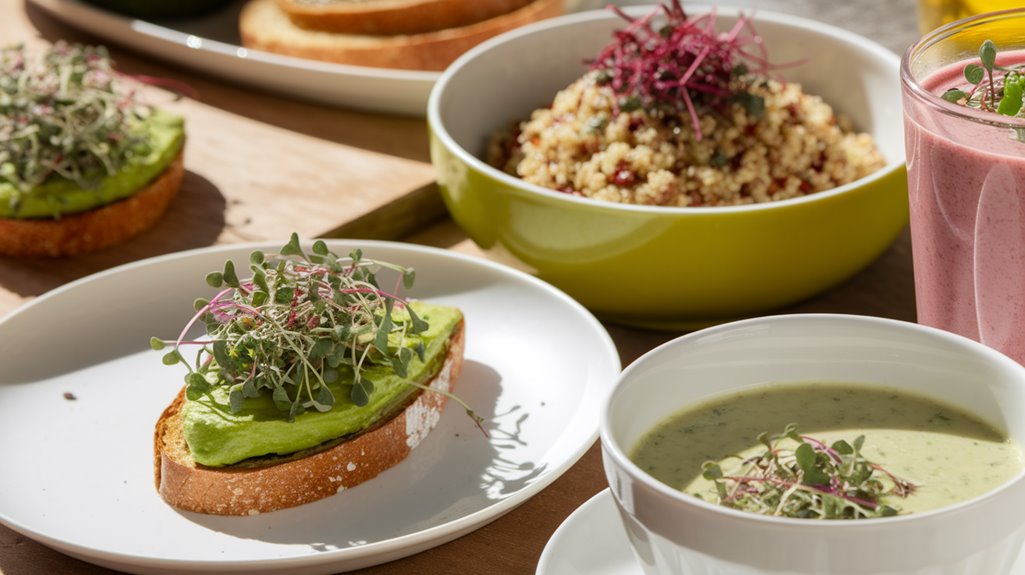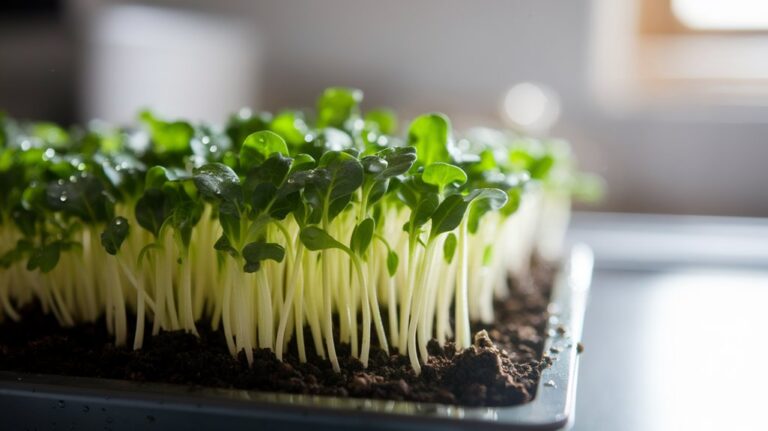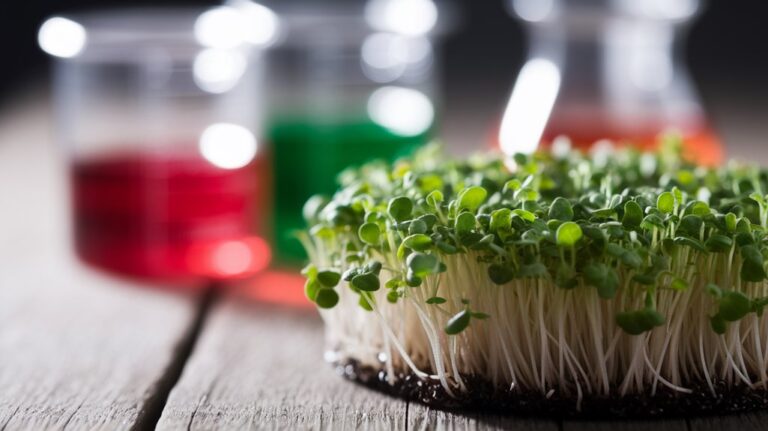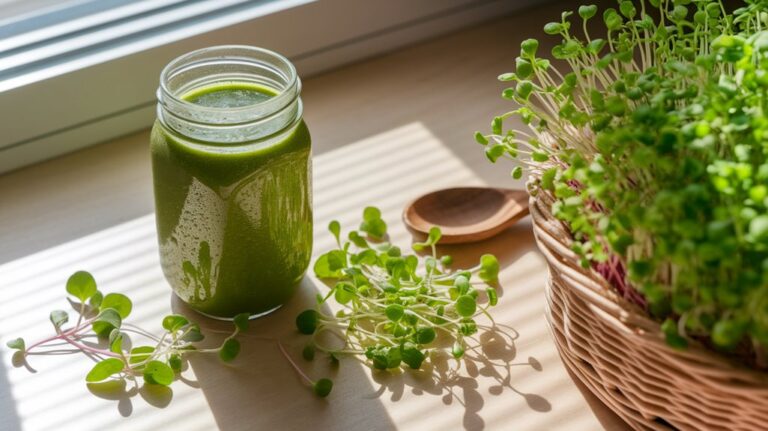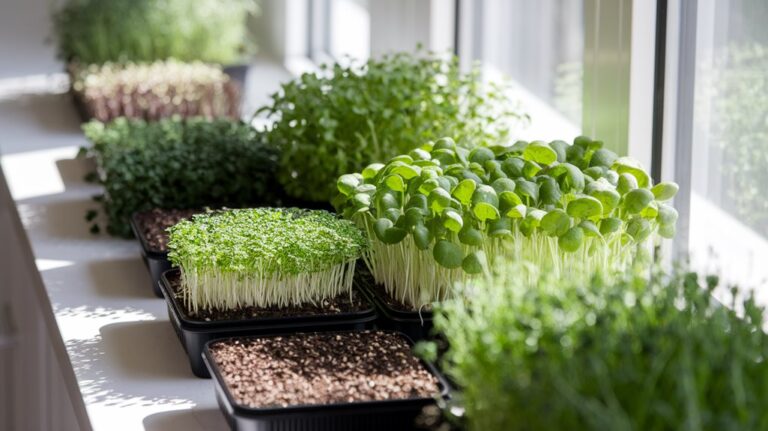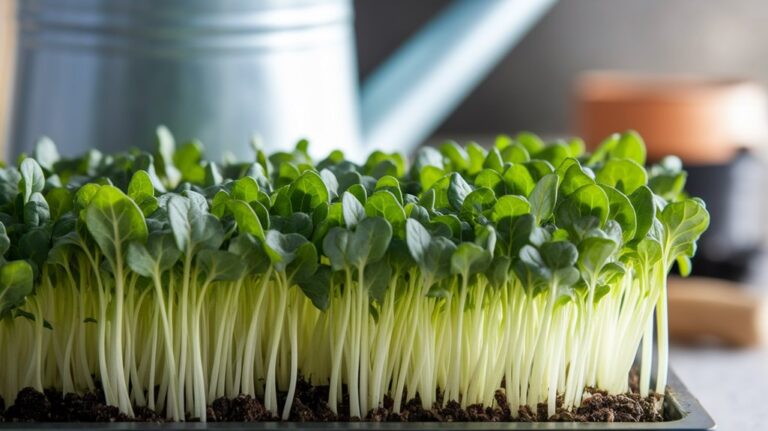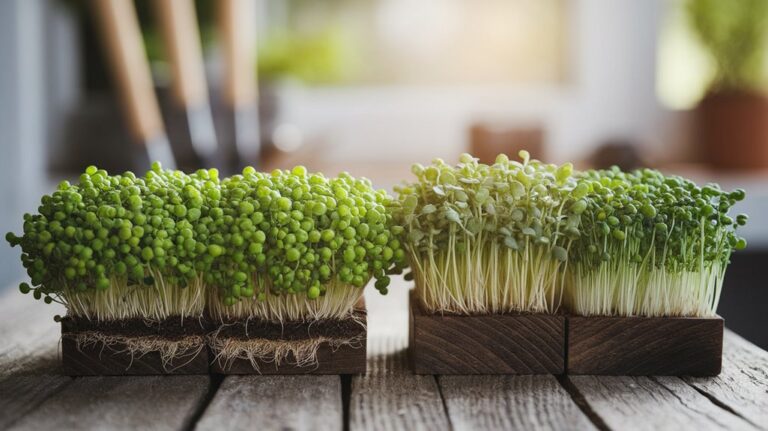5 Simple Ways to Incorporate Microgreens Into Your Meals
I love incorporating microgreens into my meals for a boost of flavor and nutrition. I often add them to salads for texture, use them as sandwich toppings for a fresh crunch, and sprinkle them on soups and stews for an exciting finish. Blending them into my smoothies supercharges my drinks, and they elevate my omelets and scrambles with their vibrant taste. There are even more creative ways to use these nutrient powerhouses in your cooking.
Key Takeaways
- Add microgreens to salads for an extra boost of flavor and nutrition, rinsing them gently before serving.
- Use microgreens as a crunchy sandwich topping, experimenting with different varieties for unique flavor profiles.
- Garnish soups and stews with microgreens for enhanced taste and a fresh appearance just before serving.
- Blend microgreens into smoothies for added nutrients without changing the drink’s texture, pairing well with fruits.
- Incorporate microgreens into omelets and scrambles for a nutritious upgrade, adding flavor and vitamins to your breakfast.
Add Microgreens to Your Salads
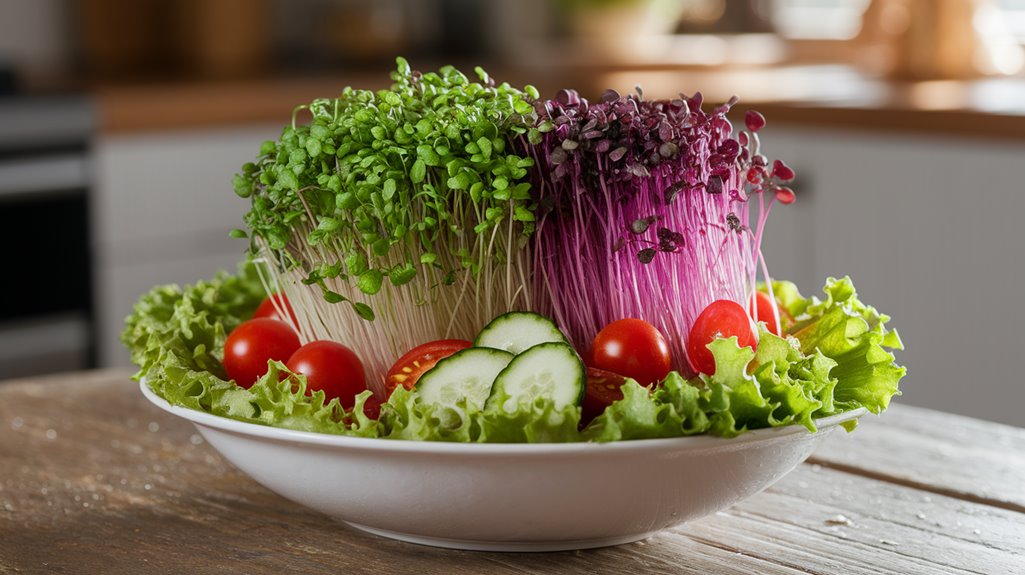
Adding microgreens to your salads can elevate both flavor and nutrition in just a few simple steps.
I love sprinkling a handful of these tiny greens on top of my salads, as they pack a powerful punch of vitamins and minerals. Research shows that microgreens can contain up to 40 times the nutrients of their mature counterparts.
Simply choose varieties like arugula, radish, or broccoli, which all add unique flavors and textures. I usually rinse them gently, ensuring they’re clean, and then toss them in just before serving to maintain their freshness.
You’ll not only enhance the visual appeal of your dish but also boost its health benefits. So, why not give it a try and transform your salads today?
Use Microgreens as a Sandwich Topping
While you might think of traditional toppings for your sandwiches, incorporating microgreens can elevate your meal to a whole new level. These tiny greens, packed with flavor and nutrients, provide a fresh crunch that complements various ingredients.
For example, I love adding arugula microgreens to a turkey sandwich for a peppery kick. They’re rich in vitamins A, C, and K, which can enhance your overall health.
You can also try sunflower microgreens for a nutty flavor that pairs beautifully with hummus. Simply sprinkle a generous handful atop your favorite sandwich for added texture and nutrition.
Experimenting with different varieties can keep your meals exciting and flavorful. Trust me, once you try it, you won’t go back to plain toppings!
Garnish Soups and Stews With Microgreens
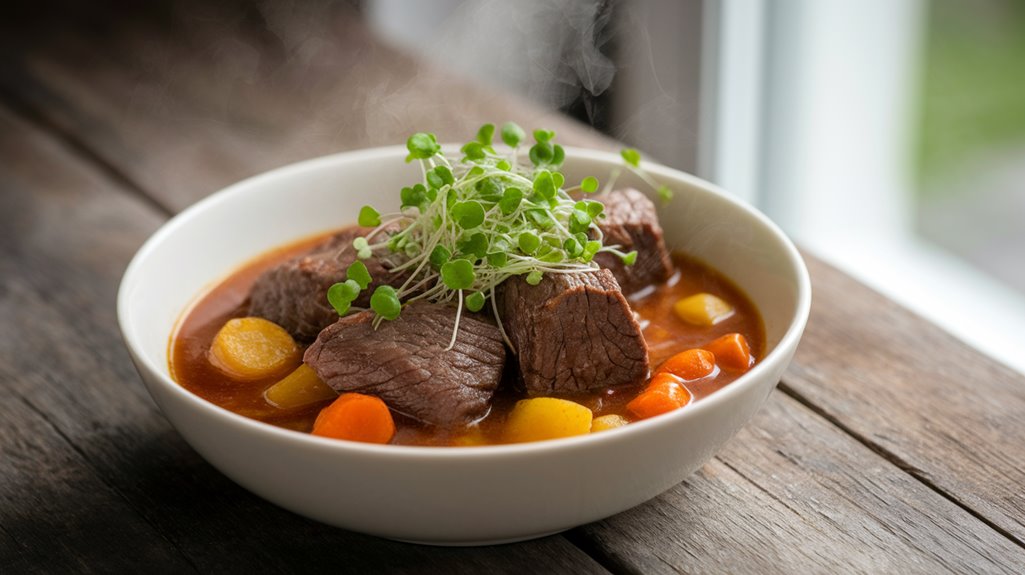
Microgreens aren’t just for sandwiches; they can also elevate your soups and stews. I love adding these tiny powerhouses for both flavor and nutrition.
They provide a fresh, vibrant touch that perfectly complements the rich flavors of hearty dishes.
Here are a few microgreens I often use:
- Pea Shoots: Their sweet, nutty taste enhances creamy soups beautifully.
- Radish Greens: They add a peppery kick that balances savory stews.
- Basil Microgreens: These give a fragrant finish, perfect for tomato-based soups.
Just sprinkle them on top right before serving for a burst of color and freshness.
Not only do they enhance presentation, but they also pack a nutritional punch, making your meals even healthier.
Blend Microgreens Into Smoothies
When I want to supercharge my smoothies, I often blend in microgreens for an extra boost of nutrients. These tiny greens are packed with vitamins, minerals, and antioxidants, making them a powerful addition to my morning routine.
I particularly enjoy using varieties like kale, arugula, or spinach microgreens, as they easily complement fruits and other ingredients. Just a handful can enhance the flavor and nutritional profile without altering the texture significantly.
Research shows that microgreens can contain up to 40 times more nutrients than their mature counterparts. I typically mix them with bananas, berries, and a splash of almond milk for a delicious, healthful drink.
It’s an easy way to incorporate more greens into my diet!
Incorporate Microgreens Into Omelets and Scrambles

Adding microgreens to my omelets and scrambles transforms a simple dish into a nutrient-rich powerhouse.
These tiny greens offer a concentrated source of vitamins, minerals, and antioxidants, enhancing both flavor and health benefits. I love experimenting with different varieties to keep my breakfast exciting.
- Sunflower microgreens add a nutty flavor and are rich in protein and healthy fats.
- Radish microgreens bring a peppery kick and contain high levels of vitamin C.
- Pea shoots are sweet and tender, packed with fiber and vitamins A, C, and K.
To incorporate them, I simply sprinkle a handful into my eggs just before serving.
It’s an easy way to elevate my meals while boosting my nutrient intake!
Frequently Asked Questions
Conclusion
Incorporating microgreens into your meals is a simple yet effective way to boost nutrition and flavor. By adding them to salads, sandwiches, soups, smoothies, or omelets, you can enjoy their vibrant taste and health benefits effortlessly. Research shows that microgreens are rich in vitamins and antioxidants, making them a powerhouse addition to any dish. So, the next time you’re cooking, don’t forget to sprinkle in some microgreens for that extra nutritional punch!

